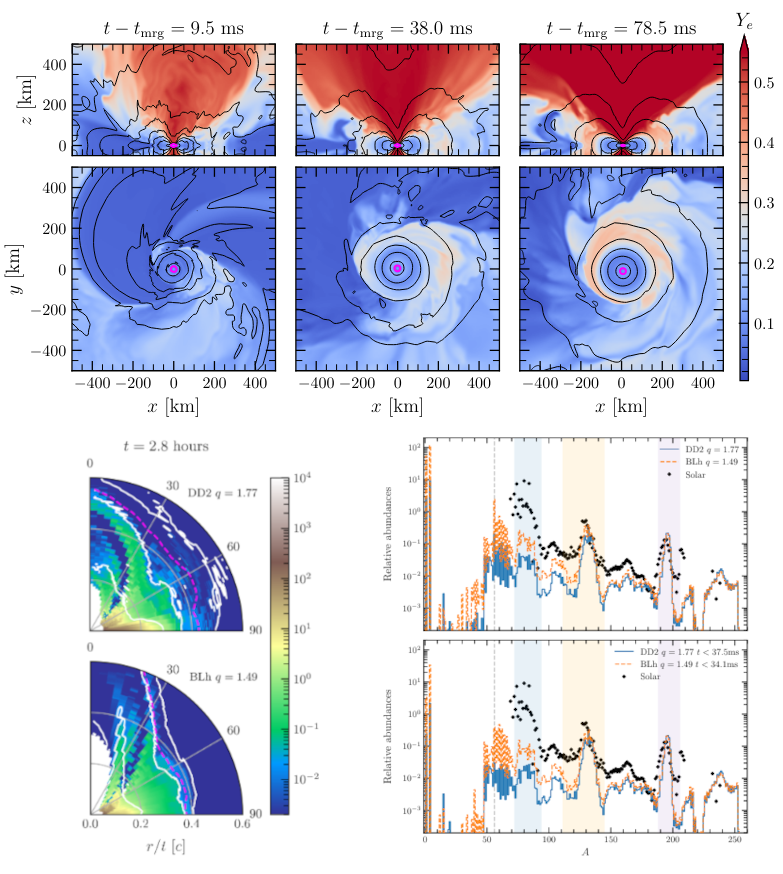Long-lived neutron-star remnants from asymmetric binary neutron star mergers: element formation, kilonova signals and gravitational waves
In 2409.18185 we present 3D general-relativistic neutrino-radiation hydrodynamics simulations of asymmetric binary neutron star mergers producing long-lived neutron stars remnants and spanning a fraction of their cooling time scale. Two binaries with mass ratios of 1.77 and 1.49 described by a stiff and a soft microphysical equation of state are considered. The mergers are characterized by significant tidal disruption with neutron rich material forming a massive disc around the remnant. The latter develops a one-armed dynamics that is imprinted in the emitted kilo-Hertz gravitational waves. Angular momentum transport to the disc is initially driven by spiral-density waves and enhanced by turbulent viscosity and neutrino heating on longer timescales. The mass outflows are composed by neutron-rich dynamical ejecta of mass ∼10−3−10−2Mo followed by a persistent spiral-wave/neutrino-driven wind of ≳10−2Mo with material spanning a wide range of electron fractions, ∼0.1−0.55. For the stiff EOS and largest mass ratio binary, tidal dynamical ejecta have fast tails up to velocities ∼0.8~c. The outflows are further evolved to days timescale using 2D ray-by-ray radiation-hydrodynamics simulations that include an online nuclear network. We find complete r-process yields and identify the production of 56Ni and the subsequent decay chain to 56Co and 56Fe. Synthetic kilonova light curves predict an extended (near-) infrared peak a few days postmerger originating from r-processes in the neutron-rich/high-opacity ejecta and a UV/optical peak a few hours postmerger originating from weak r-processes in the faster ejecta components. Additionally, the fast tail of tidal origin generates kilonova afterglows potentially detectable in radio and X band on a few to ten years timescale. Given the common dynamical features (mass asymmetry, tidal disruption and neutron star remnant), our simulations highlight significant quantitative differences between the two models in the ejecta dynamics that are reflected in the multimessenger emissions.
Read more
